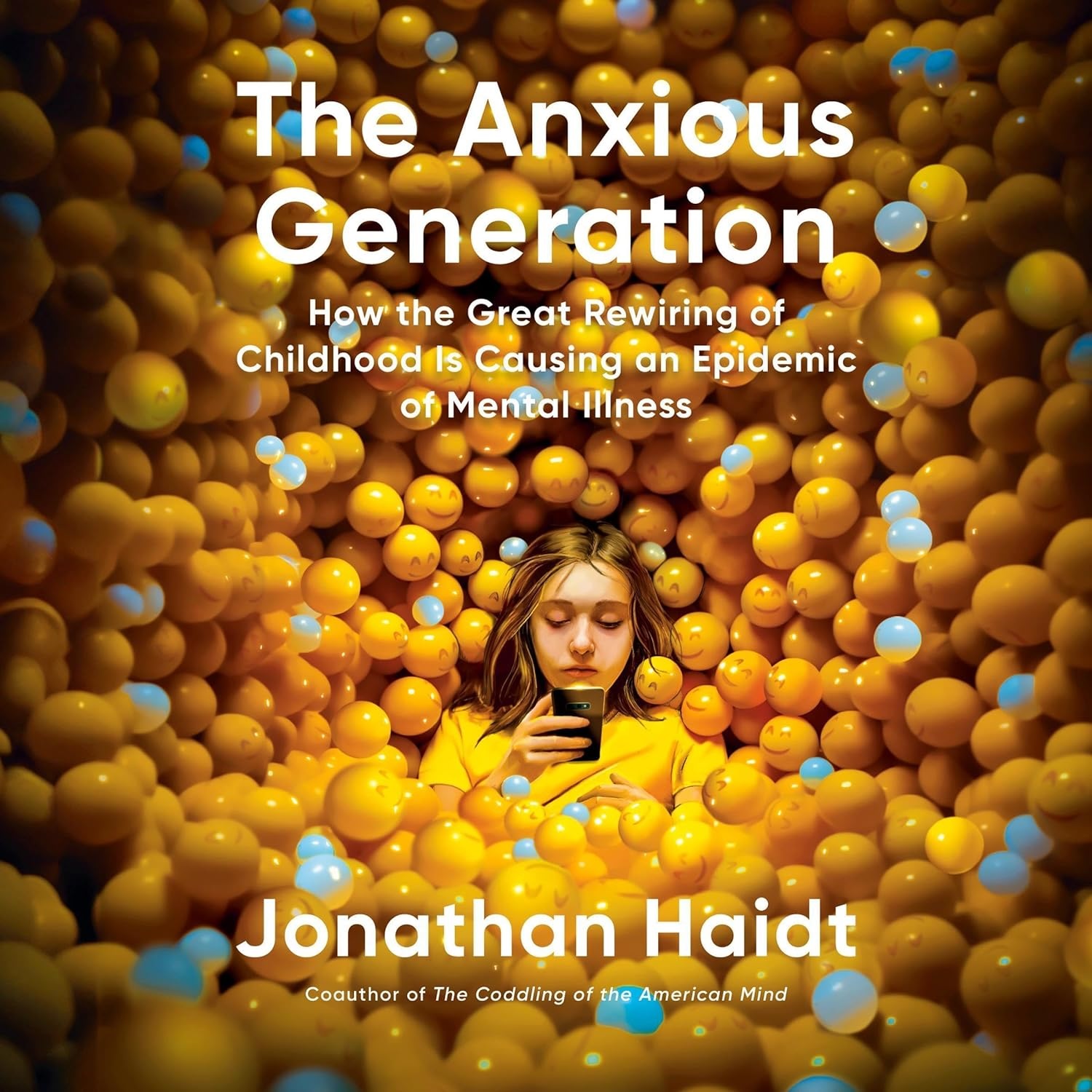
The Anxious Generation: Hoe the Great rewiring of Childhood I Causing an Epidemic of Mental Illness by Jonathan Haidt warns of the harm done to children who live in a phone-based world with limited opportunity to play and connect with the real world. There is serious research to support banning phones in schools and keeping kids off of social media until they turn 16. This could well be the most important book I have summarized out of well over 200. Every principal, teacher, and parent needs to read it.
Introduction<: Growing Up on Mars
- Jonathan uses the analogy of letting your kid live on Mars or giving them a smart phone with limited or no constraints. The people of generation Z (born after 1995) are at ground zero for increased mental health problems caused by overprotection in the real world and under protection in the virtual world.
- While there wasn’t research when the tech industry foisted technology on this generation, we have it now. It shows that kids with smart phones are more depressed and depression increases with more use. It’s more harmful for girls who favor social media, but it is also a problem for boys who get lost in games and porn. Childhood has gone from play-based to phone-based.
Part 1: Tidal Wave – 1. The Surge of Suffering
- In 2010 the iPhone 4 was introduced, the first cellphone with a front-facing camera. The Android version followed the same year. That year, the Instagram app was introduced. Although it was popular, it took off when Facebook bought it in 2012. The years from 2010 to 2015 are considered to be, by the author, as the years of the Great Rewiring of Childhood.
- It was these years when rates of anxiety, depression, self-harming, and suicide increased from 67% to 134%. Anxiety happens when you perceive threats. This is normal. What isn’t normal is perceiving many threats that aren’t real. Depression is marked by sadness and not feeling pleasure. These are things that seem to happen to kids when they have constant access to the Internet.
Part 2: The Backstory: The Decline of the Play-Based Childhood – 2. What Children Need to Do in Childhood
- Human children grow quickly until about two years and they grow slowly until puberty. The brain is about 90% of its final size by age five. Then it spends a lot of time making new connections and losing old ones. Play is children’s work. Children deprived of play can come out socially, emotionally, and cognitively impaired. When adults are involved, play is less free, less playful, and less beneficial. Experience, not information is the key to emotional development.
- Unstructured time with friends plummeted when students moved from basic phones to Internet phones. Parent distraction with their phones interferes with the bond between parent and child. Synchronous activities are essential for development. Social media draws students into endless hours of asynchronous communication. Phone-based activity can seem more like work than play. Using social media shapes children to the culture of the sites they visit. Conformist bias motivates children to copy what they see and prestige is gained by people who pile up the most likes.
3. Discover Mode and the Need for Risky Play
- Since the 1990s, parents have tended to overprotect children from the real world and under-protect children from the online world where more dangers lurk. Human evolution has been shaped by two behavior modes. The discover mode is one where you detect opportunities and explore them. The defend mode features identifying threats and finding ways to escape them. The more time a child spends in the discover mode the happier and more sociable they will be. By overprotecting kids we doom them to lots of time in the defend mode.
- Beginning with Gen-Z, children were given less freedom including outside play. When they started showing up on campus in 2014 counseling centers were overwhelmed as students grew up spending too much time in defense mode. They hadn’t learned to deal with stress so they weren’t very strong. They lacked the risky play that would keep them in discover mode. We need to keep kids as safe as necessary, not as safe as possible. They need to expect challenges from the real world. Safety-ism crushes play and the power it has.
- (Doug: You won’t learn how to deal with conflict and frustration without experience.)
DrDougGreen.com If you like the summary, buy the book





